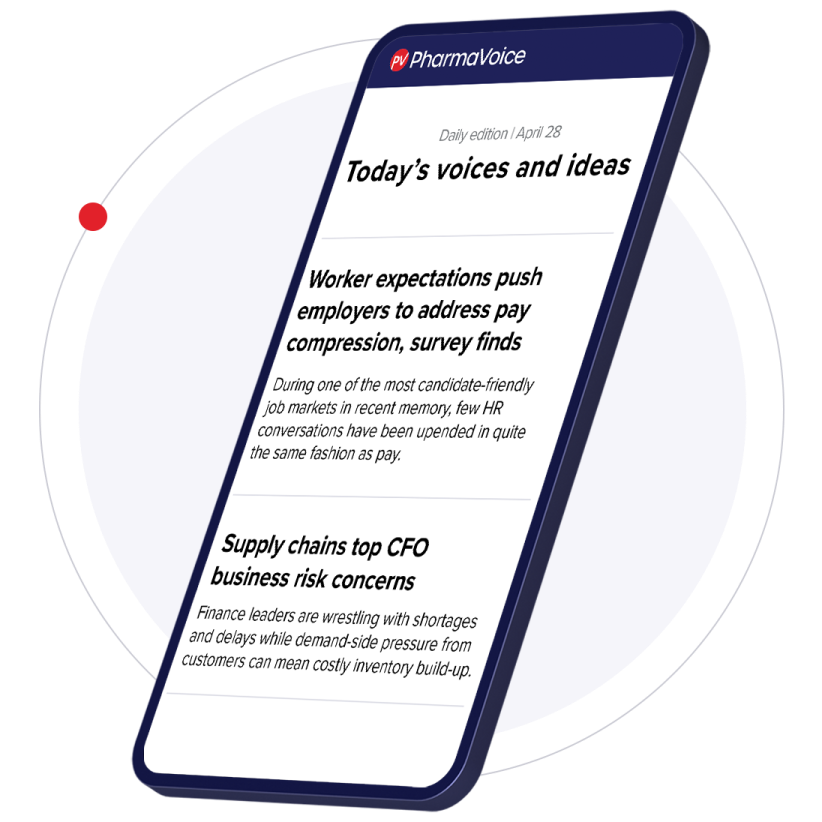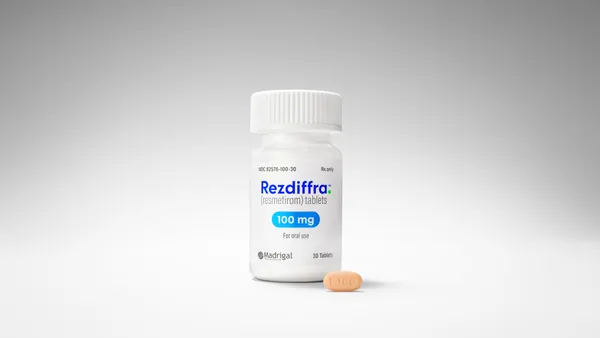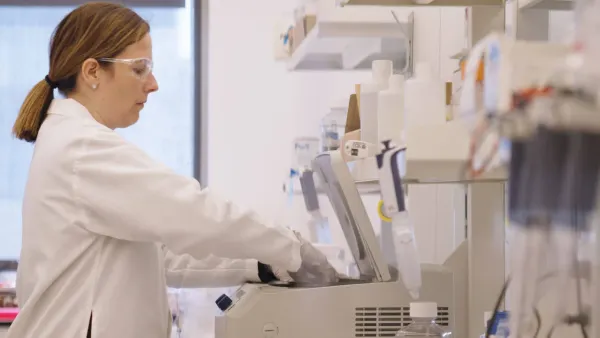For decades, the lupus community has faced a difficult reality: targeted treatment options are limited, with only two biologics approved in the U.S. to treat one of the most common forms of the condition, systemic lupus erythematosus (SLE).1 For the 5 million people globally living with this highly heterogeneous set of autoimmune diseases, the variability in their experiences – from ambiguity of symptoms to therapy response – lead to delays in diagnosis and care.2 Their challenges extend beyond diagnosis, as therapeutic options are limited for people living with the disease.3 These challenges require sustained and resilient action to bring forward new innovation.
During my years as a rheumatologist, I saw firsthand the devastating impact SLE has on a person's life. I sat with patients who struggled with difficult physical symptoms and the ultimate frustration of having very little to offer them after a long and drawn-out diagnostic process. The helplessness I felt led me to join Biogen with the hope of bringing new potential therapies to the lupus community.
Understanding the Hidden Burden of Lupus
Historically, lupus has proven difficult to target due to the many different organ systems and symptoms people may present with.3 Although anyone can develop lupus, the condition disproportionately impacts young women of child-bearing age and in particular, women of color.2
Biogen is advancing potential therapies for two of the most common forms of lupus: SLE and cutaneous lupus erythematosus (CLE). Though they share many similar symptoms, they are distinct diseases. SLE is a chronic condition that can affect multiple organ systems including a person's joints, skin, brain, lungs, kidneys and blood vessels.4, 5, 6, 7 For many, SLE presents as a “invisible” disease with more difficult-to-recognize symptoms, including chronic fatigue, severe pain episodes, body aches and sun sensitivity, each impacting a person’s health without the overt appearance of sickness.8
Similar to SLE, CLE is also a chronic condition and can cause a range of potentially disfiguring skin manifestations that can include sensitivity to sunlight, hair loss, pain, rashes, itching, scarring and abnormal skin color, all of which can substantially impact quality of life.4 In addition to the visible damage to the skin, CLE also manifests in mucosal tissues such as the areas around and in the mouth and nose.9, 10 People may have CLE alone or in association with SLE – further complicating timely diagnosis and management.
Both of these forms of lupus are incredibly heterogenous, making timely and accurate diagnosis difficult.3 While there are biologic treatment options for SLE, there is limited use of these treatments. For CLE, people living with this condition have no options specifically targeting this form of the disease.11 Both groups rely on steroids which can help reduce flares – however continued use can lead to long term damage and toxicities. Reducing the dose of steroids and ultimately discontinuing their use are important treatment goals.12 There is a clear need for additional options for this community.
Addressing Different Forms of Lupus
Biogen has started by recognizing the complexity of lupus biology and its multiple pathways and then targeting these mechanisms to advance potential therapies for the different forms of the disease including SLE, CLE and lupus nephritis – a serious complication of SLE that impacts the kidneys. If Biogen is successful, these could become the first lupus portfolio in the industry. Decades of study and innovation in neuroimmunology and immunology have given our team the insight and expertise to target the diverse immune pathways that drive lupus progression.
With three programs currently in Phase 3 that have previously shown promising clinical data, our team hopes to deliver potential first-in-class therapies in SLE and CLE that could expand and redefine the treatment landscape.
This progress builds on our proven track record in MS where there are many similarities: both diseases are heterogeneous and can have delays to accurate diagnosis, impact a younger and predominately female population, are associated with flares, remission and relapses and are driven by an underlying immunologic pathology.13 As one of the first companies to successfully navigate the complexities of MS, bringing multiple drugs to market, we understand what it takes to unravel the challenges people with these complex diseases face. We're applying this same deep knowledge and bench-to-bedside expertise to lupus, dedicating the time and effort required to deliver a multi-faceted therapeutic approach for patients.
Bridging Experience and Innovation for the Lupus Community
The conversations I had with patients and the resilience I witnessed in the lupus community fueled my decision to join Biogen. I wanted to move beyond managing symptoms and help advance potential therapies that could fundamentally change how we treat the different forms of this disease, including SLE and CLE.
At Biogen, I see that same dedication mirrored in our work every day. We understand the urgency and the deep, unmet need for new solutions. Our goal is to provide meaningful advancements for a community that has waited far too long. By exploring multiple pathways and applying our deep expertise in immunology we are advancing innovative approaches to potentially treat forms of lupus like CLE and SLE. What drives us is the hope of creating therapies that can truly transform the lives of those living with this disease.
Learn more about how we’re making a difference for the lupus community.
References
1 Katarzyna PB, Wiktor S, Ewa D, Piotr L. Current treatment of systemic lupus erythematosus: a clinician's perspective. Rheumatol Int. 2023 Aug;43(8):1395-1407.
2 Lupus Foundation of America. Lupus Facts and Statistics. 2025. Available at: https://www.lupus.org/resources/lupus-facts-and-statistics Accessed October 2025.
3 Mayo Clinic. Lupus. https://www.mayoclinic.org/diseases-conditions/lupus/symptoms-causes/syc-20365789 Accessed October 2025 .
4 Kaul A, et al. Nat Rev Dis Primers 2016;2:16039
5 Fanouriakis A, et al. Ann Rheum Dis 2024;83:15–29
6 Van Vollenhoven RF, et al. Ann Rheum Dis 2014;73:958–967
7 Barber MRW, et al. Nat Rev Rheumatol 2021;17:515–532
8 Fanouriakis A, Tziolos N, Bertsias G, et al. Update οn the diagnosis and management of systemic lupus erythematosus. Ann Rheum Dis. 2021;80(1):14-25.
9 Vale ECSD, Garcia LC. Cutaneous lupus erythematosus: a review of etiopathogenic, clinical, diagnostic and therapeutic aspects. An Bras Dermatol. 2023 May-Jun;98(3):355-372. doi: 10.1016/j.abd.2022.09.005. Epub 2023 Mar 1. PMID: 36868923; PMCID: PMC10173173.
10 Burge SM, Frith PA, Juniper RP, Wojnarowska F. Mucosal involvement in systemic and chronic cutaneous lupus erythematosus. Br J Dermatol. 1989 Dec;121(6):727-41. doi: 10.1111/j.1365-2133.1989.tb08215.x. PMID: 2611124.
11 Shi H, Gudjonsson JE, Kahlenberg JM. Treatment of cutaneous lupus erythematosus: current approaches and future strategies. Curr Opin Rheumatol. 2020 May;32(3):208-214. doi: 10.1097/BOR.0000000000000704. PMID: 32141953; PMCID: PMC7357847.
12 Chatham WW, Kimberly RP. Treatment of lupus with corticosteroids. Lupus. 2001;10(3):140-7. doi: 10.1191/096120301675075008. PMID: 11315342.
13 National MS Society. What Is Multiple Sclerosis? August 2025. Available at: https://www.nationalmssociety.org/understanding-ms/what-is-ms Accessed October 2025








